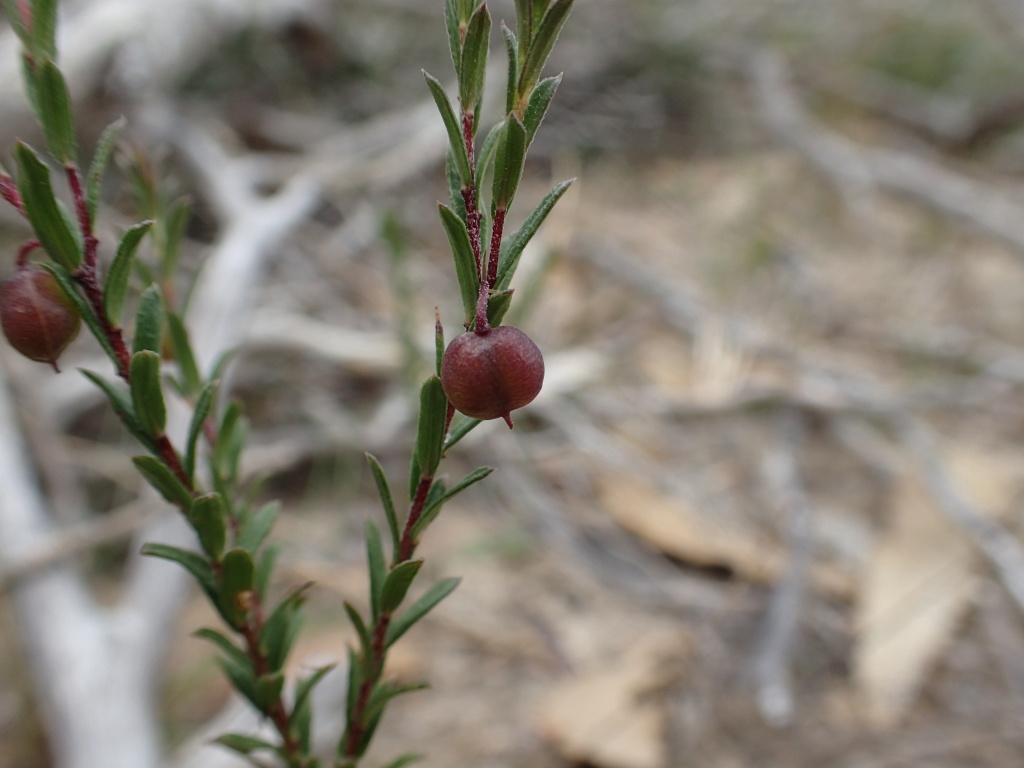Rhytidosporum procumbens
(Hook.) F.Muell. White MarianthProcumbent to erect subshrub, to c. 40 cm high, young stems finely pubescent. Leaves subsessile, linear to narrowly obovate, 5–18 mm long, 1–3.5 mm wide, acute, commonly 3-toothed at apex, sparsely pubescent to glabrous, often slightly scabrous; margins thickened to recurved. Flowers solitary (rarely paired) in upper axils; pedicel 2–7 mm long, elongating to c. 15 mm long and deflexing in fruit; sepals narrowly lanceolate, 2–5 mm long, often purplish; petals free, elliptic, 3–8 mm long, white or flushed mauve outside; stamens slightly shorter than petals. Capsule 2-locular, elliptic or obcordate, c. 5 mm long, 7 mm wide; seeds elliptic, c. 2 mm long, brown, deeply wrinkled. Flowers Aug.–Nov.
VVP, VRiv, GipP, OtP, Gold, CVU, GGr, NIS, EGL, EGU, WPro, HSF, HNF, OtR, Strz, MonT, HFE, VAlp. Also SA, Qld, NSW, Tas. Moderately common in heathland and woodlands, mostly developed on poor sandy or stony soils of the lowlands, but with isolated high-altitude occurrences at Mt William in the Grampians, Brumby Point on the Nunniong Plateau, and at Mt Tingaringy on the New South Wales border.
Walsh, N.G.; Albrecht, D.E. (1996). Pittosporaceae. In: Walsh, N.G.; Entwisle, T.J., Flora of Victoria Vol. 3, Dicotyledons Winteraceae to Myrtaceae, pp. 526–539. Inkata Press, Melbourne.
 Spinning
Spinning


